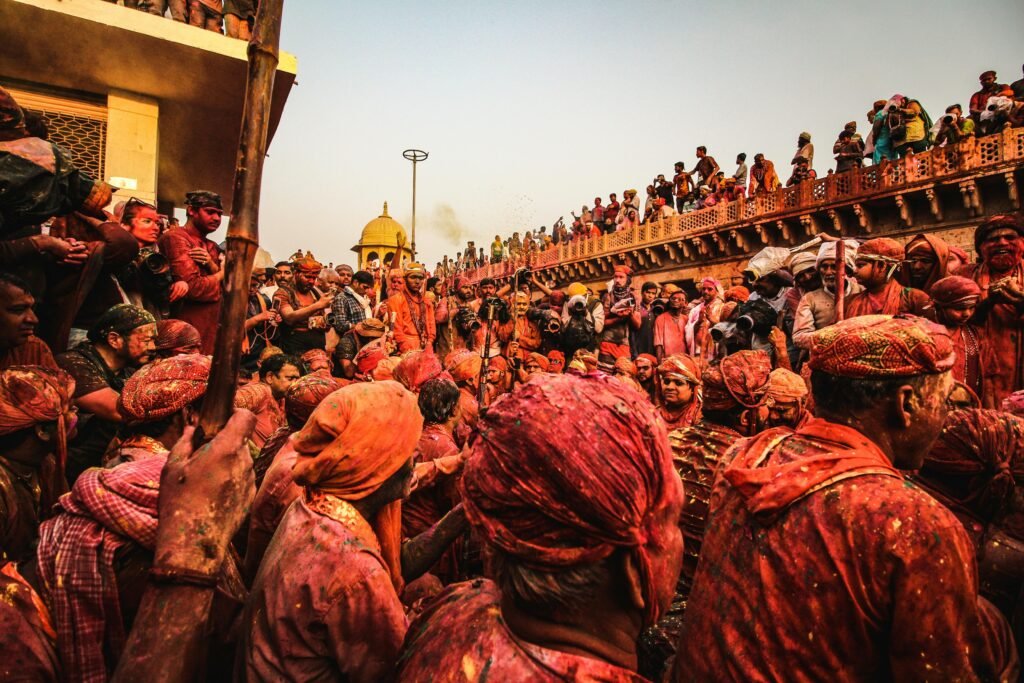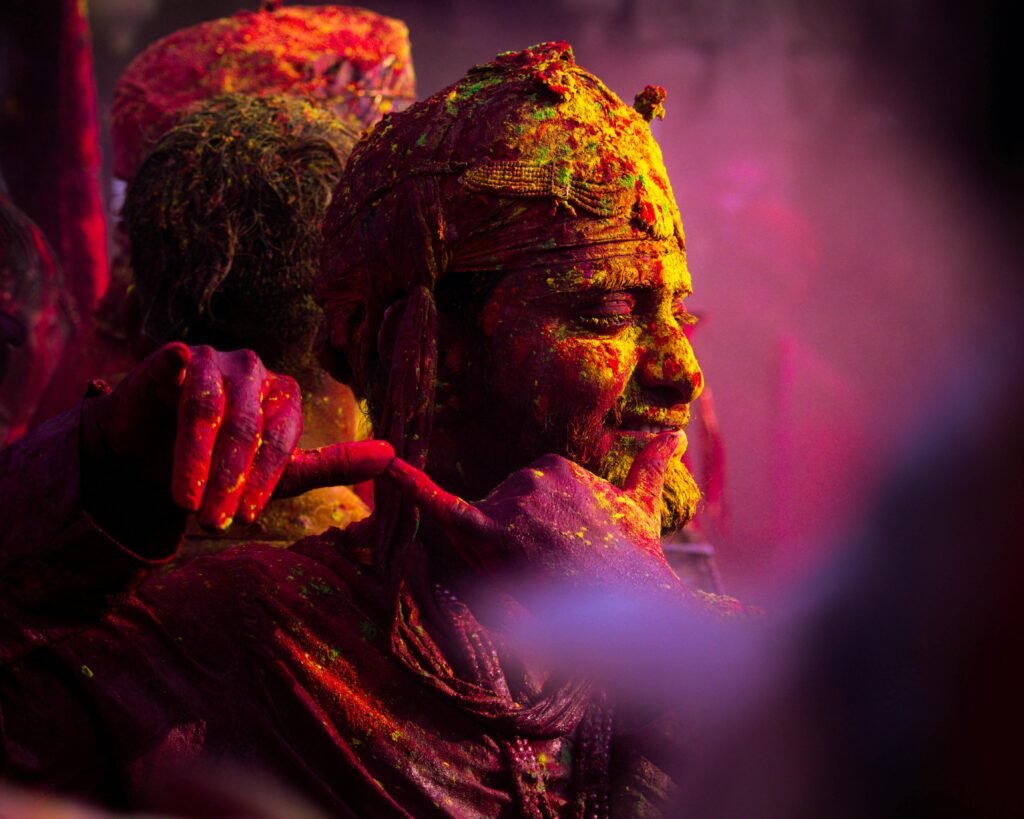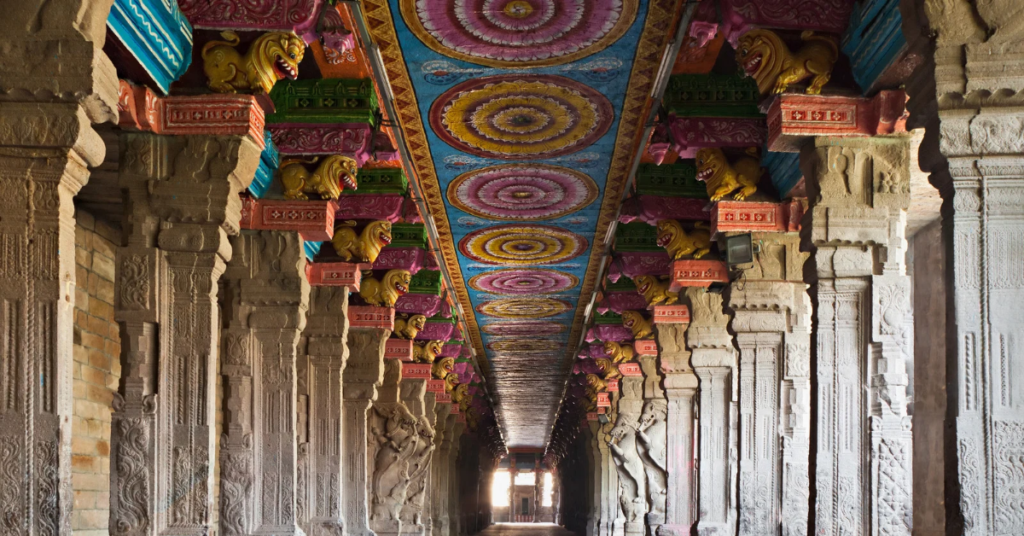
Introduction: Temples with Breathtaking Architecture – A Divine Legacy
India is home to over two million temples, each with a unique story, rich history, and mesmerizing craftsmanship. From towering gopurams to intricately carved stone walls, temples with breathtaking architecture stand as testaments to devotion and artistic genius. Some temples, like the Brihadeeswarar Temple, were built over 1,000 years ago and still leave visitors in awe. Did you know that the Kailasa Temple in Ellora was carved out of a single rock? This architectural marvel continues to baffle historians and engineers alike.
Temples in India are more than places of worship; they are sacred spaces where spirituality, culture, and history merge. For centuries, Hindus have believed that temples are “divine energy centers”, designed to channel cosmic vibrations for peace and enlightenment. According to legend, Lord Vishwakarma, the celestial architect, crafted some of the most legendary temples, including Dwarka, the lost city of Krishna. Each temple, whether a grand shrine like the Jagannath Temple in Puri or a hidden gem like the Modhera Sun Temple, carries echoes of devotion and divine craftsmanship.
In this article, you will explore India’s most breathtaking temple architecture, uncover fascinating legends, and learn what makes these spiritual wonders so extraordinary. Whether you are a traveler, a history buff, or simply someone who admires beauty, get ready to embark on a journey through India’s most awe-inspiring temples.
Evolution of Indian Temple Architecture: A Journey Through Time
India’s temples with breathtaking architecture have evolved over centuries, blending art, devotion, and engineering brilliance. Three major styles—Nagara, Dravidian, and Vesara—define the country’s temple architecture, each telling its own divine tale.
Nagara Style: The Grandeur of North India
The Nagara style, prominent in North India, is known for its towering shikharas (spires) and intricate carvings. These temples are usually built on raised platforms with no large gateways. The Khajuraho Temples in Madhya Pradesh, famous for their erotic sculptures, showcase divine stories through stone art. The Konark Sun Temple, shaped like a chariot with giant stone wheels, is a UNESCO World Heritage Site and a marvel of celestial geometry. According to legend, the temple once had a floating magnet at its top, holding its entire structure together!
Dravidian Style: The Majesty of South India
In South India, the Dravidian style dominates with its massive gopurams (gateway towers), mandapas (pillared halls), and towering vimanas (sanctum towers). The Meenakshi Temple in Madurai, with its 33,000 sculptures, is a masterpiece of mythological storytelling. The Brihadeeswarar Temple, built by the Cholas, has a granite tower so perfectly balanced that its shadow never falls on the ground at noon! Devotees believe Lord Shiva himself blessed its construction, ensuring its divine precision.
Vesara Style: A Fusion of Two Worlds
The Vesara style blends Nagara and Dravidian elements, seen in Karnataka’s Chennakesava and Hoysaleswara Temples. These temples boast intricate friezes, lathe-turned pillars, and celestial sculptures that appear lifelike. Legends say sculptors of these temples were so skilled that deities blessed their hands, allowing them to carve with supernatural precision.
From sky-high towers to stunning sculptures, these temples with breathtaking architecture stand as symbols of devotion and artistic excellence. Each stone whispers ancient hymns, inviting you to witness India’s divine heritage!
Temples with Breathtaking Architecture – A Divine Experience
India is home to some of the most temples with breathtaking architecture, each a masterpiece of devotion and craftsmanship. These sacred sites are more than just places of worship—they are living testaments to faith, culture, and artistic brilliance. Let’s take a journey through India’s most mesmerizing temples, each with its own unique charm and historical significance.
A. North India’s Marvels
Kashi Vishwanath Temple, Varanasi – The Heart of Hindu Spirituality

Located on the banks of the Ganges, the Kashi Vishwanath Temple is one of the holiest sites for Hindus. Dedicated to Lord Shiva, it is believed that a visit here grants moksha (liberation from the cycle of rebirth). The golden domes, intricate spires, and the spiritual energy of Varanasi make it a must-visit. Devotees chant “Har Har Mahadev” as they walk through its sacred corridors, feeling the divine presence in every corner.
Kandariya Mahadev Temple, Khajuraho – An Artistic Masterpiece
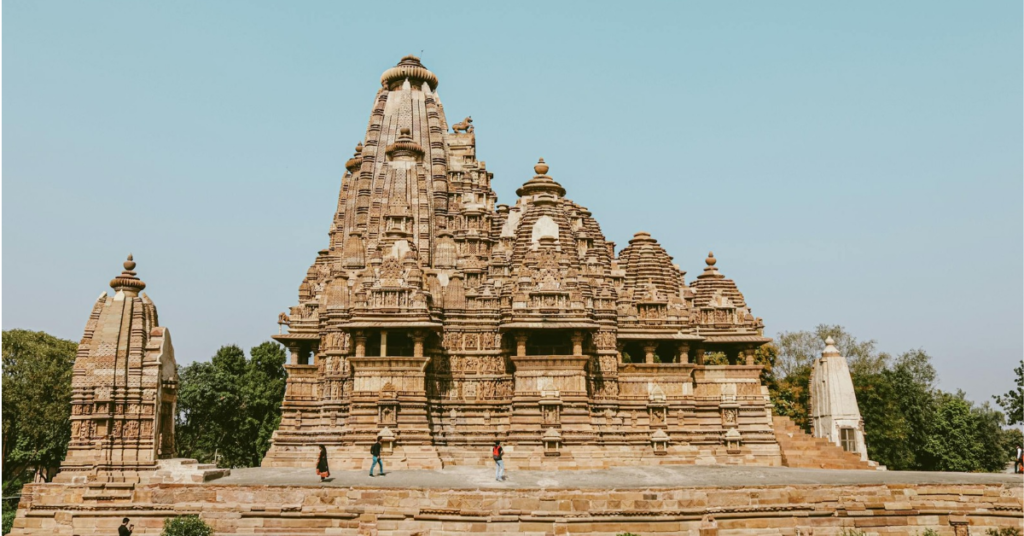
The Kandariya Mahadev Temple in Khajuraho, Madhya Pradesh, is famous for its sensual yet spiritual sculptures. Built in the Nagara style, the temple features over 800 intricate carvings depicting gods, goddesses, and celestial beings. Many believe these sculptures represent the union of the human soul with the divine, making it a temple of both art and enlightenment.
B. South India’s Architectural Wonders
Meenakshi Temple, Madurai – A Riot of Colors and Sculptures
The Meenakshi Temple is a visual delight with its 12 towering gopurams covered in vibrantly painted sculptures. Dedicated to Goddess Meenakshi (Parvati) and Lord Sundareshwar (Shiva), the temple boasts over 33,000 intricately carved statues. The Hall of a Thousand Pillars is a marvel, where each pillar produces a different musical note when tapped. Pilgrims believe the temple is guarded by celestial beings who bless devotees with prosperity.
Brihadeeswarar Temple, Thanjavur – The Big Temple of India
The Brihadeeswarar Temple, also known as the Big Temple, was built over 1,000 years ago by the mighty Chola King Raja Raja I. This temple is an engineering marvel—its Vimana (tower) stands 216 feet high, and its shadow never falls on the ground at noon! Made entirely of granite, the temple houses a massive 13-foot Shiva Lingam and is a testament to ancient India’s architectural brilliance.
Virupaksha Temple, Hampi – A Living Heritage
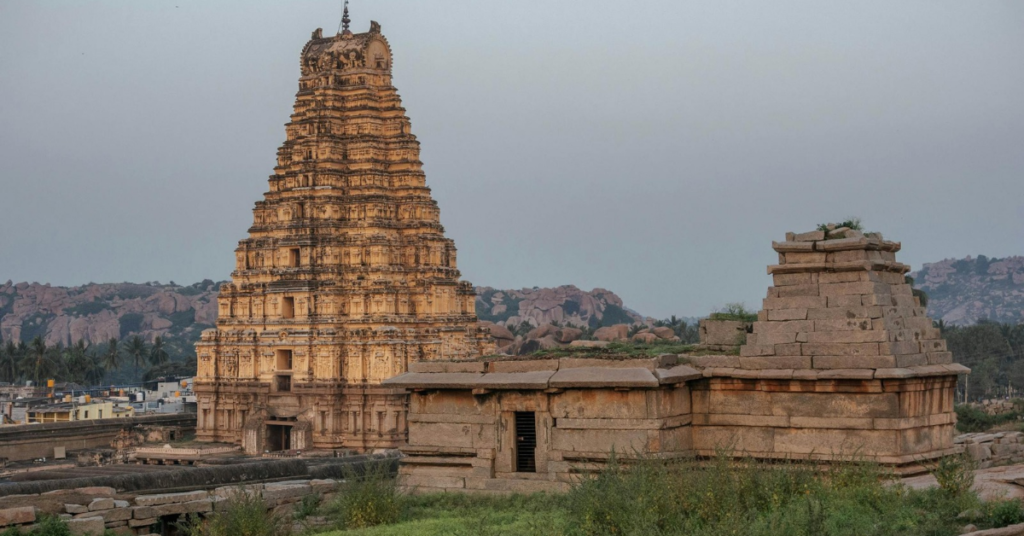
The Virupaksha Temple, located in the ruins of Hampi, is one of the few temples that have been continuously worshipped for over 1,000 years. Dedicated to Lord Shiva, its grand entrance tower (gopuram) and intricate carvings transport visitors back to the era of the Vijayanagara Empire. Devotees believe the temple elephant, Lakshmi, grants blessings to those who seek divine grace.
C. Western & Central India’s Iconic Temples
Somnath Temple, Gujarat – The Eternal Shrine
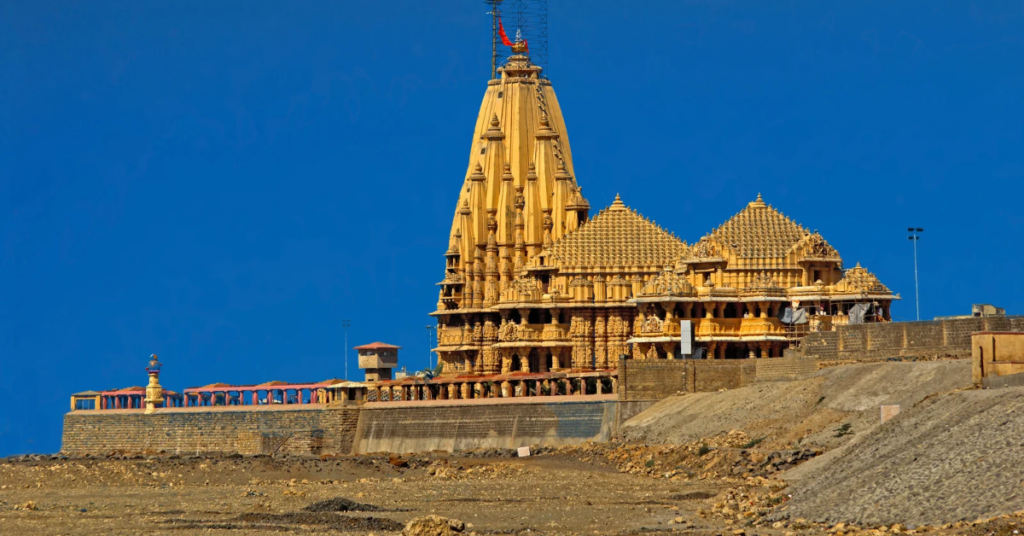
The Somnath Temple is one of the 12 Jyotirlingas, believed to be the first temple built by Lord Shiva himself. Over centuries, it has been destroyed and rebuilt at least 17 times. Despite its turbulent history, the temple stands tall, offering a serene and divine experience on the shores of the Arabian Sea.
Dilwara Temples, Rajasthan – The Marble Wonder
The Dilwara Jain Temples are known for their exquisite white marble carvings, so detailed that they appear translucent. Built between the 11th and 13th centuries, the temples are an epitome of Jain craftsmanship. Each pillar and ceiling is adorned with delicate floral and mythological designs, making it one of the most awe-inspiring temples with breathtaking architecture.
Mahakaleshwar Temple, Ujjain – The Timekeeper of the Universe
One of the most revered Jyotirlingas, the Mahakaleshwar Temple is known for its Bhasma Aarti, where the Shiva Lingam is worshipped with sacred ash every morning. The temple’s intricate carvings, underground sanctum, and massive courtyard reflect ancient architectural grandeur. According to legend, Lord Shiva himself resides here as Mahakal, the ruler of time.
D. Eastern India’s Spiritual Heritage
Konark Sun Temple, Odisha – A Chariot of the Sun God
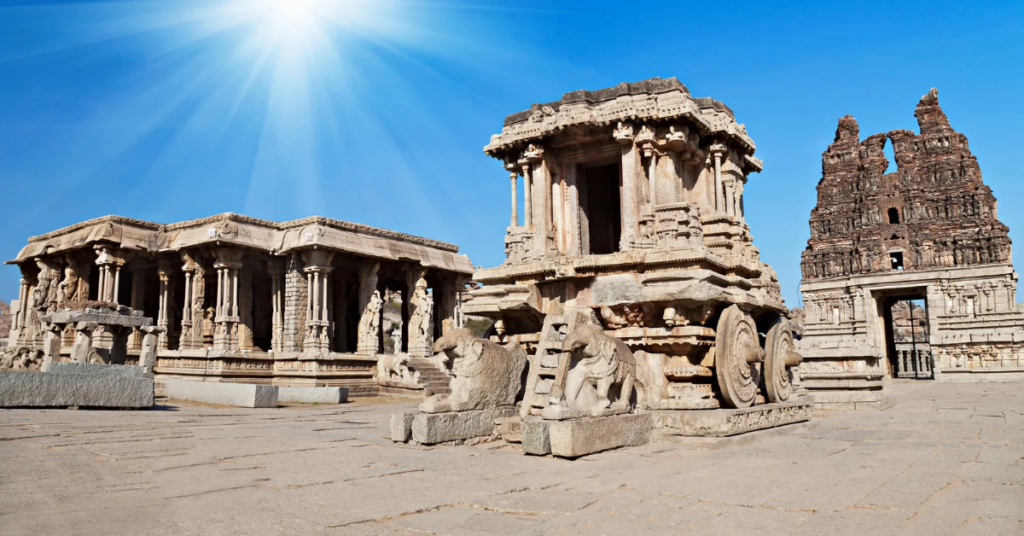
The Konark Sun Temple stands as an architectural wonder, built in the shape of a giant stone Chariot with seven Horses. This UNESCO World Heritage Site, dating back to the 13th century, is dedicated to Surya, the Sun God. The temple’s 24 intricately carved wheels symbolize the hours of the day. Legend says a massive magnetic stone once levitated at its peak, defying gravity! Though partially in ruins, its detailed carvings of celestial beings, dancers, and mythical creatures still leave visitors in awe.
Jagannath Temple, Puri – The Mystery Temple
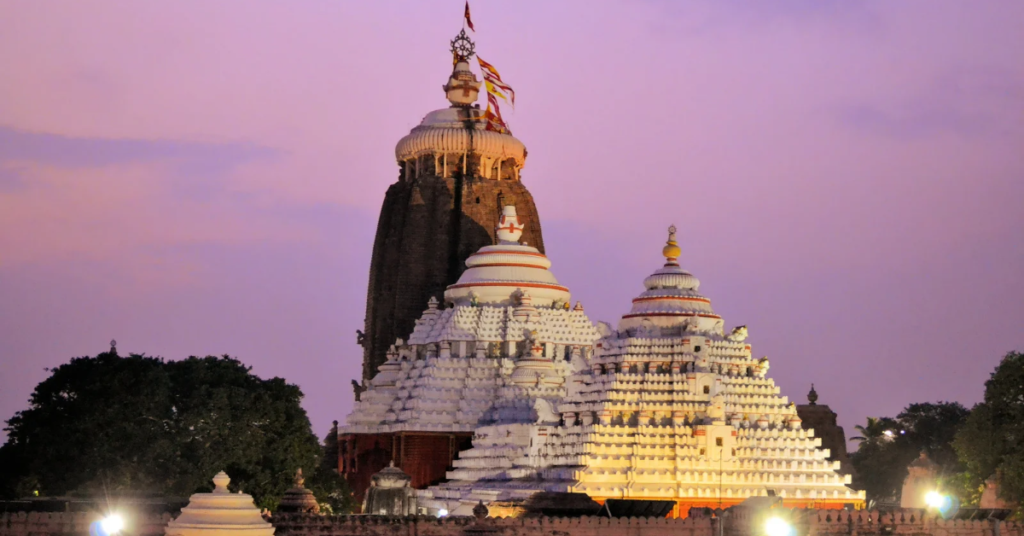
The Jagannath Temple in Puri is famous for its massive Rath Yatra (chariot festival), where three colossal wooden chariots carry the deities through the city. The temple defies logic—its flag always flutters in the opposite direction of the wind, and no birds fly above its towering structure! It is believed that Lord Vishnu himself governs these mysteries.
Kamakhya Temple, Assam – The Seat of Feminine Power
The Kamakhya Temple, one of the 51 Shakti Peethas, is dedicated to Goddess Shakti. Unlike other temples, it does not have an idol; instead, it worships a natural rock formation symbolizing the goddess’s womb. Every year, during the Ambubachi Mela, devotees believe that the goddess undergoes a menstrual cycle, signifying the power of creation.
Lingaraj Temple, Bhubaneswar – The Kalinga Jewel
The Lingaraj Temple is an architectural masterpiece of the Kalinga style, featuring a towering 180-foot shikhara. Dedicated to Harihara (a unique form of Lord Shiva and Vishnu combined), the temple exudes divine energy. The sacred Bindusagar Lake which is nearby is believed to have water from all the holy rivers of India.
Unique Features of Indian Temple Architecture
Temple Carvings and Mythological Stories
Step into any ancient Indian temple, and you step into a world of storytelling. The temple walls aren’t just stone; they are living legends. The Kailasa Temple in Ellora, carved from a single rock, depicts scenes from the Ramayana and Mahabharata. The Sun Temple at Konark has intricate sculptures of celestial beings and chariots of Surya, the Sun God. Every carving has a tale, a lesson, or a blessing. You aren’t just visiting a temple; you’re reading an open-air epic.
Engineering Marvels – The Floating Pillars of Lepakshi Temple
Have you ever seen a pillar that doesn’t touch the ground? The Lepakshi Temple in Andhra Pradesh has one! Out of 70 pillars, one mysteriously floats, defying gravity. Devotees believe this is a divine sign, while engineers marvel at the precision of ancient craftsmen. The Brihadeeswarar Temple in Tamil Nadu, built over 1,000 years ago, has a massive granite dome—but no binding material holds it in place. How did they lift 80 tons to that height? No one knows for sure.
The Science Behind Temple Construction – Vastu and Energy Fields
Temples aren’t just about devotion; they are energy centers. Ancient builders followed Vastu Shastra, ensuring temples aligned with cosmic energies. The Garbhagriha (sanctum) is placed where the Earth’s magnetic forces are the strongest. Walking barefoot in a temple isn’t just tradition—it’s believed to absorb positive vibrations. Even the temple bells aren’t random. Their sound frequencies are designed to clear your mind and bring focus. Temples with breathtaking architecture don’t just impress your eyes; they uplift your spirit.
Wouldn’t you love to visit a place that blends art, science, and spirituality so beautifully?
Practical Visitor Information
If you’re planning to explore temples with breathtaking architecture, timing is everything. Many temples open before sunrise, when the atmosphere is most peaceful. Visit Madurai’s Meenakshi Temple during the evening aarti for a mesmerizing experience. Avoid summer afternoons at stone temples like Konark’s Sun Temple, as they can get extremely hot. Monsoon brings a magical charm to hill temples like Kedarnath but also unpredictable weather.
Photography in temples can be tricky. Some allow photos in outer courtyards but ban them in sanctums. The Brihadeeswarar Temple doesn’t permit photography inside, but its grand exterior is worth capturing. Always check local rules before clicking. A good tip? Visit early for soft lighting and fewer crowds—your pictures will look divine!
Dress modestly when visiting temples. Traditional attire like sarees, salwar suits, or dhotis is ideal. Some temples, like Padmanabhaswamy in Kerala, strictly enforce dress codes. Covering your head in Sikh and some Hindu temples is a sign of respect. Footwear is always left outside, so wear easy-to-remove shoes.To learn more about Temple etiquettes, read the blog.
Most major temples are wheelchair-friendly today, with ramps and assistance. Tirupati Temple even provides battery-operated vehicles for senior citizens. If you love stories, guided temple tours are worth it. They bring myths to life, explaining hidden details you might miss. Wouldn’t you love to hear ancient legends while standing before a 1,000-year-old marvel?
Conclusion
India’s temples with breathtaking architecture are more than just places of worship—they are masterpieces of devotion, science, and art. From the towering gopurams of Tamil Nadu to the rock-cut wonders of Ellora, each temple tells a story. These sacred spaces were designed not just to impress but to inspire. Standing before a 1,000-year-old temple, you can almost hear whispers of ancient prayers in the wind.
Have you visited a temple that left you awestruck? Share your experiences in the comments! Every temple has a hidden tale, and we’d love to hear yours.
While exploring, let’s practice responsible tourism. Respect traditions, follow guidelines, and help preserve these marvels for future generations. Need a guide to find hidden gems? The DivyaKripa app offers insights into India’s spiritual heritage.
Every pillar, carving, and corridor holds centuries of devotion. Are you ready to embark on your own temple adventure?

